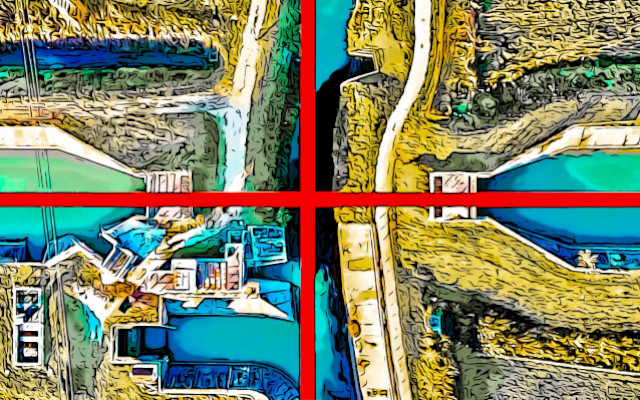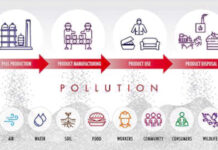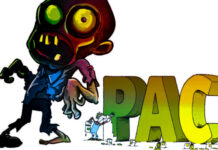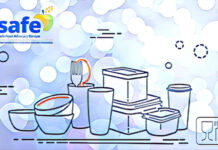NO PFAS Moms and Greenpeace have made public the extensive list of foods contaminated by dangerous PFAS, in the Veneto region. (1)
Thousands of analyses-conducted by ARPA and ISS (Istituto Superiore di Sanità) in 2016/2017-had been concealed by the Veneto Region, therefore condemned to the TAR. (2)
Action is now awaited from the Minister of Ecological Transition, to ensure an effective yet complex environmental cleanup, and the criminal judiciary. #Clean Spades, indeed Nuremberg.
The pràivasi of siór Zaia
Greenpeace had asked the Veneto Region for access to information on the impact on the food chain of the ecocide caused by the Miteni chemical industry over 40 years of spilling PFAS and other toxic chemicals. In aquifers that are used to feed more than 400 thousand humans, farm animals, irrigate fields and process food.
However, siór Zaia had alleged the theorem of farmers’ pràivasi(privacy) in order to deny the request for access to the ‘Food Sampling Plan for the Detection of Perfluoroalkyl Substances‘ carried out by the ISS under delegation from the Veneto Region, in 2016-2017. In defiance of environmental information rights asserted in the EU, including Italy. (3)
Environmental information, the right of access
The environmental information to which citizens have a right of access extends to:
– ‘the state of human health and safety, including the contamination of the food chain, the conditions of human life.’
– ‘Measures, including administrative measures, such as policies, legislation, plans, programs, environmental agreements and any other act, including administrative acts, as well as activities that affect or may affect the elements and factors of the environment‘ (Legislative Decree 195/05, Article 2.1.a, points 6 and 3).
TAR Veneto, the condemnation of siór Zaia
The public authority ‘shall make (…) the environmental information held available (…) to any person who requests it, without that person having to declare his or her
interest‘. Complying with it ‘as soon as possible and, in any case, within 30 days from the date of receipt of the request.’ 60 days, in cases of particular magnitude and complexity only (Legislative Decree 195/05, Article 3).
The Veneto Regional Administrative Court thus ordered sìor Luca Zaia to respond to the request for access to documents, within 60 days of the publication of the ruling 25.3.21. (2) That is, to exhibit not only aggregate data on contamination, but also details on the number of samples, geolocation of the points and/or farms and food processors where they were taken, and levels of contamination.
NO PFAS Moms, Greenpeace. The disaster data and the omissions of the Veneto Region
NO PFAS Moms and Greenpeace published a joint paper, 20.9.21 (4,5,6). To take stock of the disaster and denounce the serious omissions of the Veneto Region in managing a crisis that affects food safety, the environment and public health.
The ISS report of ‘Food Exposure Assessment and Risk Characterization‘ (2019), it is preliminarily noted, refers to the performance of analysis on 1,248 foods (614 of plant origin and 634 of animal origin).
However, the Veneto Region provided less data, the two associations note. First notes follow, with further reflections of the writer added in purple.
1) PFAS-contaminated foods.
Food contamination has reached very high levels. Available partial data indicate the following peaks:
- 37,100 ng/kg PFAS in eggs, 400-36,800 the meats (from beef liver pork muscle), 18,600 the fish (carp),
- 3,500 ng/kg apricots, 2,900 wine grapes, 2,700 cherries, 2,600 pears,
- 2,600 ng/kg green beans, 1,900 corn, 1,300 lettuce, 800 peas and tomatoes.
However, the ULSSs in charge of sampling (ULSS 8 Berica, ULSS 6 Euganea, and ULSS 9 Scaligera) failed to collect samples of the food matrices of major production significance. Why were analyses omitted on spinach, radicchio, kiwi, melons, watermelons, wheat, soybeans, apples, other leafy vegetables? Who gave the order to exclude such productions from analysis?
2) Analytical deficiencies
The analyses failed to identify and measure the presence of individual toxic molecules other than PFOA and PFOS. Although the scientific literature reports the toxicity of numerous other compounds, in the broad PFAS family.
EFSA, the European Food Safety Authority, in turn considered the PFNA and PFHxS molecules, in addition to the two above, to define an overallTolerable weekly intake(TWI) of 4.4 ng/kg body weight. (7)
3) Failure to manage risk
The Veneto Region-primarily responsible for the management of the risk that occurred in its territories, in the figures of its president Luca Zaia and director Prevention, Food Safety, Veterinary Francesca Russo-appears to have failed to:
– Notify in the EuropeanRapid Alert Systemon Food and Feed(RASFF), through the ministerial point of contact, the serious risks identified, (8)
– Undertake corrective actions to protect food safety. First, the public recall of all potentially unsafe foods and suspension of the activities involved until they are made safe, (9)
– analyze other food matrices, including those produced in the so-called orange zone (i.e., on the edge of the red zone, the epicenter of the environmental disaster),
– Take the necessary measures to safeguard public health with respect to the identified risks. Therefore, declare a state of emergency so as to ensure immediate compensation for damages, pending the trial of those primarily responsible for the environmental disaster,
– Assess, also with the support of ISS, the increased risks of dietary exposure to PFAS for the local population already subject to chronic environmental exposure. (10)
4) Failure to follow up the crisis
The extraordinary prevalence and severity of the food safety crisis, in 22 of the 26 municipalities where samples were taken, should have prompted the investigation to be expanded over a wider area. More importantly, to continue the analysis that instead appears to have been discontinued in 2017, as if everything went well instead of very badly.
‘Added to this is the absence of decisive action to zero pollution and reduce, at least progressively, the contamination of non-drinking water.’ (4)
Does the polluter pay?
The Miteni trial — for the crimes of water poisoning, malicious disaster, environmental pollution and fraudulent bankruptcy — kicked off on 1.7.21, at the Vicenza Assize Court. Eight years have passed since the facts were established in May 2013, when the Ministry of Environment forwarded a report on the environmental disaster, prepared by the CNR, to the Veneto Region.
There are 15 defendants, including Japanese managers of Mitsubishi Corporation and Luxembourg-based International Chemical Investors (which has controlled Miteni since 2009). The disaster probably began in the days when the chemical industry was started, under the name Rimar, by the Marzotto group. And it continued under Mitsubishi-Enichem management from 1998 to 2009, even before the entry of Luxembourg investors.
However, a reform of environmental crimes is indispensable, for the dual purpose of excluding their statute of limitations and extending to them every measure already established in Italy for mafia-type associative crimes. This is the only way to ensure the premise of the ‘polluter pays’ principle-crystallized in European law (12)-which precisely in Veneto also assumes significance due to the consumption of agrochemicals 12 times higher than the EU average. (13)
Environmental remediation, #CleanSpades.
Ecological Transition Minister Roberto Cingolani is perhaps the only one today who can guarantee the research, development and implementation of an adequate environmental remediation program. Given the severity and extent of pollution by toxic chemicals that are known as forever chemicals, precisely because of their persistence in the environment and resistance to degradation.
The relevant public prosecutor ‘s offices must also investigate the governor of the Veneto Region and his acolytes for deliberately failing to take the necessary measures to manage and communicate the public health risk. Thus contributing to the exposure of hundreds of thousands of people to serious dangers, including those outside the Region in terms of the circulation of contaminated food.
Nuremberg
Bulgarian support for siór Zaia’s policies cannot absolve him of very serious responsibilities. For failing to protect its citizens-and to a lesser extent consumers residing elsewhere of the contaminated foods-from life-threatening and incurable diseases. Tumors, endocrine, neurological and cardiovascular diseases, and diabetes are the most serious risks, male fertility collapse the most common.
Green Europe regional councilor Cristina Guarda notes how ‘precious time has been lost in the Veneto in recent years.’
‘As a farmer in the so-called red zone, I highlighted the need for action and in support of the agricultural sector, proposing a coordinated response from the regional departments dealing with agriculture and health, since on the Pfas issue they should have acted in concert or at least coordinated.’
PFAS, the German lesson
Europa Verde, in the voice of Cristina Guarda, recalls the German lesson in managing environmental crises related to PFAS contamination. As of 2013, two accidents occurred in Baden-Württemberg on 884 hectares of land.
The state and federal government, however, instead of sweeping the poisons under the carpet, immediately activated the appropriate measures to protect the public. New water derivations but also new plans for agriculture, with the promotion of certain crops over others, and reclamation of land as well as the water table.
Dario Dongo
Cover image taken from PFAS.land
Notes
(1) Dario Dongo. Toxic chemicals in disposable packaging and tableware. PFAS investigation in EU. GIFT (Great Italian Food Trade). 5/29/21, https://www.greatitalianfoodtrade.it/imballaggi-e-moca/sostanze-chimiche-tossiche-in-imballaggi-e-stoviglie-usa-e-getta-inchiesta-sui-pfas-in-ue
(2) Marco Milioni. Pfas contamination on the food chain, Veneto Region must desecrate data: at the Tar Greenpeace sends palazzo Balbi KO. https://supporto01.blogspot.com/2021/04/contaminazione-da-pfas-sulla-catena.html?m=1
(3) Legislative Decree. 195/05 as amended. Implementation of Directive 2003/4/EC on public access to environmental information. Text updated as of 9/15/10 on Normattiva https://bit.ly/2XFTIh4
(4) Moms No Pfas, Greenpeace. PFAS in foods in the Veneto red area. Press release 20.9.21, https://bit.ly/3nV9zD1
(5) Mark Million. Pfas and food: there is contamination in 22 out of 26 municipalities. Vicenza Today. 9/20/21, https://www.vicenzatoday.it/attualita/alimenti-contaminati-pfas-carte-segrete-ambientalisti-20-settembre-2021.html
(6) Luca Bortoli. Veneto. Pfas, it’s now official: contaminated food, and “nothing has been done.” Avvenire. 9/21/21, https://www.avvenire.it/attualita/pagine/pfas-allarme-su-carne-verdura-e-frutta
(7) EFSA, CONTAM panel (2020). Risk to human health related to the presence of perfluoroalkyl substances in food. EFSA Journal 2020;18(9):6223. https://doi.org/10.2903/j.efsa.2020.6223
(8) The search for Italian notifications involving PFAS, during the period from 31.12.15 to 21.9.21, has null results on the RASFF database(https://bit.ly/3AxNzkW)
(9) Reg. EC 178/02, so-called General Food Law, Article 19. For more details see theebook ‘Food security. Mandatory rules and voluntary standards‘ LINK https://www.greatitalianfoodtrade.it/libri/sicurezza-alimentare-regole-cogenti-e-norme-volontarie-il-nuovo-libro-di-dario-dongo
(10) Against a maximum PFOA poisoning limit defined as 8 ng/l of blood, ISS found an average of 13.8 ng/l and 40 ng/l (with peaks of 159 ng/l), respectively, among 259 residents and 122 farmers and ranchers in the Vicenza red zone. There are no reports of other biomonitoring (e.g., tissue biopsies of living and non-living people)
(11) Joseph Pietrobelli. Pfas, trial kicks off in Vicenza, eight years after groundwater pollution discovered. The Daily Fact. 1.7.21, https://www.ilfattoquotidiano.it/2021/07/01/pfas-al-via-il-processo-a-vicenza-dopo-otto-anni-dalla-scoperta-dellinquinamento-della-falda/6247733/
(12) Directive 2004/35/EC, on environmental liability with regard to the prevention and remedying of environmental damage. Consolidated text as of 6/26/19 on Europa Lex, https://bit.ly/3CB0Eux
(13) Dario Dongo. Pesticides, the danger of Peter Pan. Égalité. 5.10.19, https://www.egalite.org/pesticidi-il-pericolo-di-peter-pan/
Dario Dongo, lawyer and journalist, PhD in international food law, founder of WIISE (FARE - GIFT - Food Times) and Égalité.








